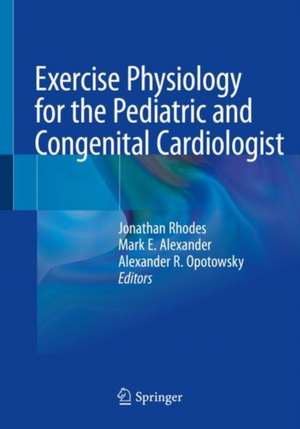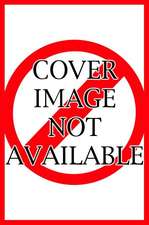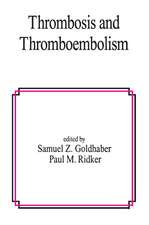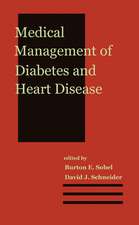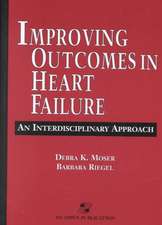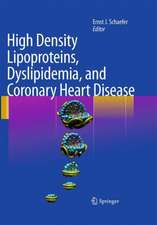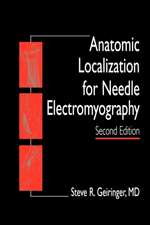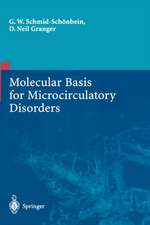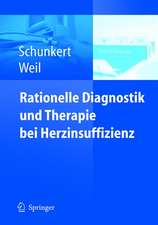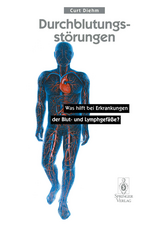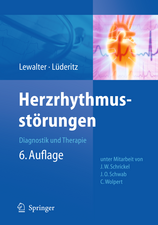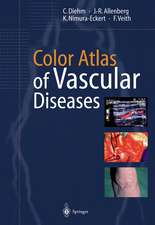Exercise Physiology for the Pediatric and Congenital Cardiologist
Editat de Jonathan Rhodes, Mark E. Alexander, Alexander R. Opotowskyen Limba Engleză Paperback – 15 aug 2020
| Toate formatele și edițiile | Preț | Express |
|---|---|---|
| Paperback (1) | 730.28 lei 3-5 săpt. | |
| Springer International Publishing – 15 aug 2020 | 730.28 lei 3-5 săpt. | |
| Hardback (1) | 885.53 lei 39-44 zile | |
| Springer International Publishing – 5 aug 2019 | 885.53 lei 39-44 zile |
Preț: 730.28 lei
Preț vechi: 768.71 lei
-5% Nou
Puncte Express: 1095
Preț estimativ în valută:
139.74€ • 145.61$ • 115.70£
139.74€ • 145.61$ • 115.70£
Carte disponibilă
Livrare economică 13-27 martie
Preluare comenzi: 021 569.72.76
Specificații
ISBN-13: 9783030168209
ISBN-10: 3030168204
Pagini: 330
Ilustrații: XVII, 330 p. 119 illus., 79 illus. in color.
Dimensiuni: 178 x 254 mm
Greutate: 0.78 kg
Ediția:1st ed. 2019
Editura: Springer International Publishing
Colecția Springer
Locul publicării:Cham, Switzerland
ISBN-10: 3030168204
Pagini: 330
Ilustrații: XVII, 330 p. 119 illus., 79 illus. in color.
Dimensiuni: 178 x 254 mm
Greutate: 0.78 kg
Ediția:1st ed. 2019
Editura: Springer International Publishing
Colecția Springer
Locul publicării:Cham, Switzerland
Cuprins
SECTION I: The Normal Cardiopulmonary Response to Exercise.- 1. Biochemistry of Exercise.- 2. Oxygen Delivery.- 3. Central Hemodynamics and Coronary Blood Flow During Exercise.- 4. CO2 Elimination (V̇CO2).- SECTION II: Conduct of the Cardiopulmonary Exercise Test.- 5. Laboratory Setup, Equipment, and Protocols.- 6. Exercise Stress Echocardiography.- 7. Other Modalities.- 8. Supervision and Safety Precautions for Exercise Testing.- 9. Special Considerations for Children.- 10. Special Considerations for Adults with Congenital Heart Disease.- SECTION III: Interpretation of the Cardiopulmonary Exercise Test.- 11. Peak Exercise Parameters.- 12. Parameters from Submaximal Exercise.- 13. Putting It All Together.- SECTION IV: Prototypical Lesions.- 14. Repaired Tetralogy of Fallot.- 15. Patients with a Fontan Circulation.- 16. Aortic Valve Disease.- 17. Coarctation of the Aorta.- 18. Systemic Right Ventricles with a Biventricular Circulation (L-Transposition and D-Transposition s/p Atrial Switch) .- 19. D-Transposition s/p Arterial Switch Operation.- 20. Ebstein’s Anomaly.- 21. Pulmonary Vascular Disease.- 22. Exercise Testing in Pediatric Dilated Cardiomyopathy.- 23. Hypertrophic Cardiomyopathy.- 24. Coronary Anomalies.- 25. Metabolic Disorders.- 26. Exercise Testing After Pediatric Heart Transplantation.- 27. Cardiac Rehabilitation and Exercise Training.- 28. Summary of Lesions.- SECTION V: Electrophysiologic Issues.- 29. Syncope, Orthostatic Intolerance, and Exertional Symptoms.- 30. Exercise Stress Testing: Diagnostic Utility in the Evaluation of Long QT Syndrome.- 31. Wolff-Parkinson-White Syndrome.- 32. Exercise Testing in the Management of Arrhythmias.- Section VI: Interesting/Instructive Cases.- 33. Patients with Physiologically Normal Hearts and Lungs.- 34. Patients with Unusual Congenital Heart Defects and/or Intracardiac Shunts.- 35. Patients with Significant Lung Disease.
Notă biografică
Jonathan Rhodes, MD
Associate Professor of Pediatrics
Harvard Medical School
Senior Associate in Cardiology
Boston Children’s Hospital
Boston, MA 02115
USA
Mark E. Alexander, MD
Associate Professor of Pediatrics
Harvard Medical School
Senior Associate in Cardiology
Boston Children’s Hospital Boston, MA 02115
USA
Alexander R. Opotowsky, MD, MPH
Associate Professor of Pediatrics, Harvard Medical School
Associate in Cardiology, Boston Children’s Hospital
Associate Physician, Brigham and Women’s Hospital
Boston, MA 02115
Associate Professor of Pediatrics
Harvard Medical School
Senior Associate in Cardiology
Boston Children’s Hospital
Boston, MA 02115
USA
Mark E. Alexander, MD
Associate Professor of Pediatrics
Harvard Medical School
Senior Associate in Cardiology
Boston Children’s Hospital Boston, MA 02115
USA
Alexander R. Opotowsky, MD, MPH
Associate Professor of Pediatrics, Harvard Medical School
Associate in Cardiology, Boston Children’s Hospital
Associate Physician, Brigham and Women’s Hospital
Boston, MA 02115
Textul de pe ultima copertă
This book provides a comprehensive overview of exercise physiology in patients with congenital heart disease and other pediatric cardiopulmonary disorders. It begins with an in-depth but pragmatic discussion of exercise physiology and the cardiopulmonary adaptations to physical activity, followed by a review of the conduct and interpretation of cardiopulmonary exercise tests. Subsequent chapters discuss exercise physiology and testing in patients with a variety of congenital heart diseases, including tetralogy of Fallot, Fontan physiology, transposition of the great arteries, aortic valve disease, and coarctation of the aorta. Additional chapters analyze other conditions commonly encountered by pediatric and congenital cardiologists such as pulmonary vascular disease, cardiomyopathies, heart transplants, and metabolic disorders. The book also examines the role of exercise testing in patients with electrophysiologic issues such as Wolff-Parkinson-White Syndrome, long QT syndrome, atrioventricular node dysfunction, and pacemakers. The presentations are enhanced by data from Boston Children’s Hospital’s vast experience with clinical exercise testing. The textbook concludes with a series of interesting and illustrative cases that build on the earlier chapters, present some fascinating physiology, and provide real-world examples of how exercise testing can inform clinical decision making. Exercise Physiology for the Pediatric and Congenital Cardiologist is a detailed, practical reference for clinicians and other health care providers engaged in exercise testing for children and adults with congenital heart disease and other conditions that may be encountered by the pediatric and congenital cardiologist. It is an essential resource for physicians, medical students, and exercise physiologists as well as researchers in cardiology, pediatrics, and cardiopulmonary fitness.
Caracteristici
Provides concrete examples of cardiopulmonary exercise test data and its interpretation Focuses on congenital heart disease and other pediatric cardiovascular disorders Explains the physiology and its relationship to the clinical picture
